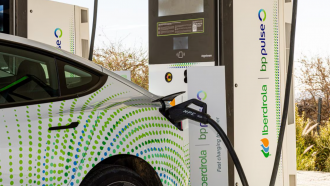Police arrested a 41-year-old man from Houston, Texas on charges of child pornography after routine Gmail scans that were able to match photos stored in the man's email account from Google's database of child pornography images.
John Henry Skillem, a chef who works at Denny's and a registered sex offender after sexually abusing a young boy 20 years ago, did not leave any traces of his activity on the Internet, except on Gmail, where he was found to have sent and received objectionable images of a young girl. After Gmail alerted the National Center for Missing and Exploited Children (NCMEC), which tipped off the police, authorities were able to obtain a warrant to search Skillem's phone and tablet, which were also found to contain child pornography images, says a report by Houston local television channel KHOU.
"I can't see that photo, but Google can," says [video] David Nettles, detective at the Houston Metro Internet Crimes Against Children Taskforce. "He was trying to get around getting caught, he was trying to keep it inside his email. I really don't know how they do their job. But I'm just glad they do it."
But while many are happy that many young children will be saved from this deplorable behavior by the offender, who is now behind bars with a $200,000 bail and charged with one account of possession and one account of promotion of child pornography, not a lot of people are singing praise for the manner in which Skillem was outed. Watchdog groups and privacy advocates, in fact, have raised their concerns regarding the privacy violations that may have been entailed in the process.
Most people know that Gmail routinely scans email content to deliver custom advertisements, but not a lot of people are aware that Google proactively scans emails to look for child pornography images. In November 2013, Google joined Microsoft and Facebook in strengthening the crackdown on online child porn, assigning more than 200 employees to the task of developing new software and algorithms to look for malicious content circulating in Gmail.
The images were discovered using a system that allows Gmail to compare a photo's numerical footprint, also known as a "hash" in the technology industry, with the footprints of other images stored in a database that Google has built together with the NCMEC. If Gmail detects an image with a hash that matches or is nearly identical to one in the database, Google is compelled by federal law to notify the authorities.
This has made many, including senior security researcher at Sophos Chester Wisniewski, wonder if Gmail is "crossing the line" with its periodic email scans. A few months back, Google announced that it will no longer scan email content to provide advertisements, but it obviously continues to scan for child pornography and child abuse content. This raises the question of what else Gmail is scanning for.
Google, of course, will not tell us, but a company spokesperson denies scanning email content for other crimes.
"It is important to remember that we only use this technology to identify child sexual abuse imagery, not other email content that could be associated with criminal activity (for example using email to plot a burglary," says Google in a statement.









